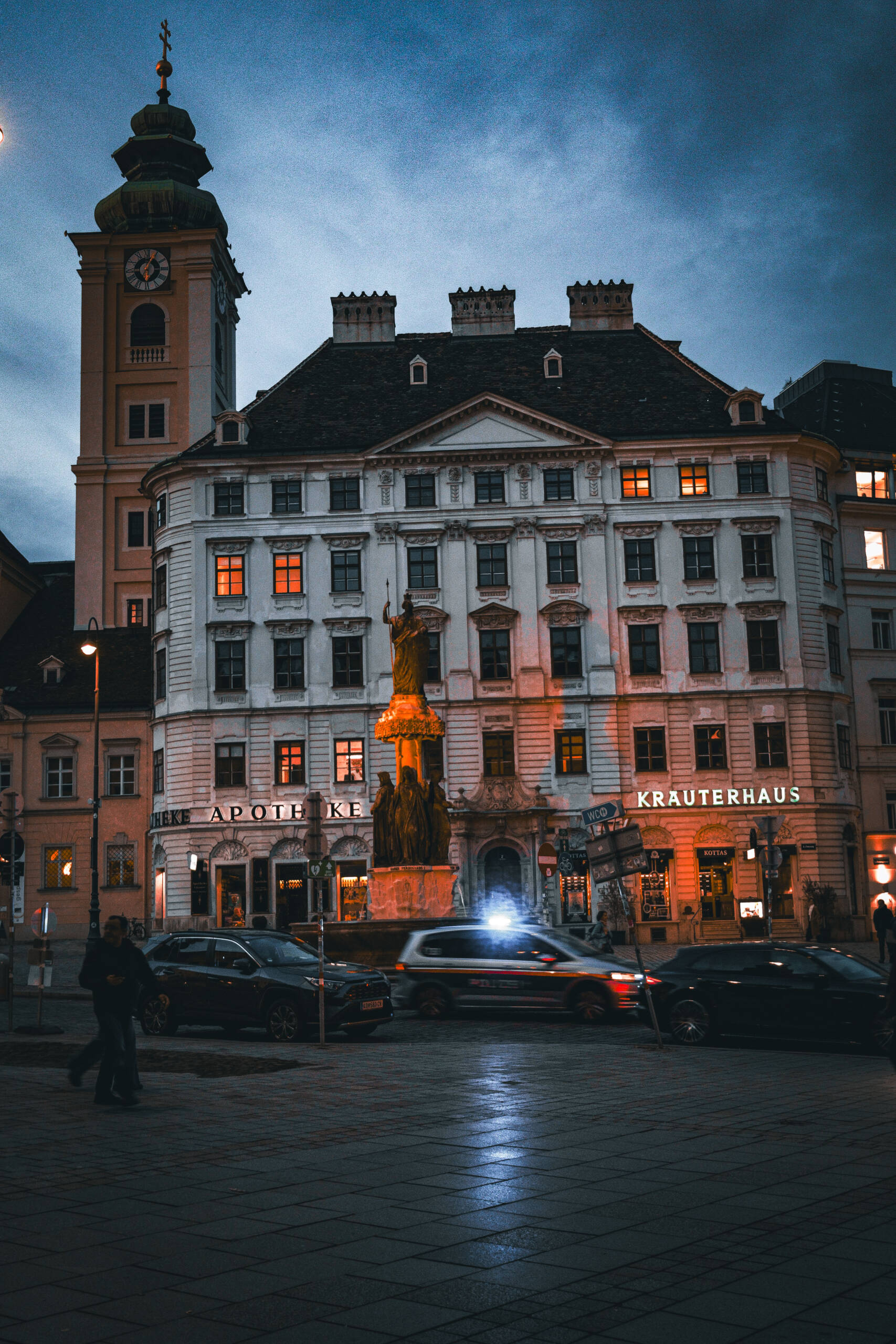There’s something about Vienna that doesn’t need filters, scripts, or set design—it already comes dressed in drama. As the day slips into evening, the city sheds its daylight bustle and turns into a place of cinematic stillness, where every corner seems composed with the eye of a director. I stood in front of a building that was never meant to be famous beyond its district, and yet it looked like the kind of backdrop you’d see in a carefully lit film.

The façade rose in pale stone, decorated with pilasters and windows framed in heavy moldings. Above, the roof carried its steep angles with dormer windows lined up like soldiers, while to the side the church tower leaned in with its clock already whispering the hour. Its green patina dome, topped with a cross, gave the skyline a gentle weight, anchoring it in centuries of faith and continuity. Yet despite the historic heaviness, the building itself seemed alive. The windows glowed orange against the cold blue of the sky, spilling light like warm breath onto the street. It wasn’t a ruin or a relic—it was still inhabited, still whispering stories of pharmacists, herbalists, and the steady churn of daily life.
Down at street level, the words “Apotheke” and “Kräuterhaus” glowed softly from their shopfronts. You can almost hear the clinking of glass jars inside, the faint smell of herbs, the quiet hum of a city that doesn’t entirely shut down at night. And there, breaking the stateliness of the scene, was a fountain crowned by a golden statue. The figure, caught mid-gesture, seemed to be both reaching upward and pointing the way, bathed in warm illumination that made it look half-sacred, half-stage-lit. For a moment I forgot I was just a passerby; I felt like an extra standing in the middle of an unfolding scene.
But cinema isn’t made only of architecture—it’s in the movement. Cars slid past on the cobblestones, their headlights streaking across the wet pavement. A police car raced through, lights flashing, its urgency carving through the calm frame like a sudden plot twist. Two people crossed in the foreground, one with hands deep in his coat pockets, the other keeping pace beside him. All of this—blurred light, hurried footsteps, quiet glow—wasn’t staged, but it might as well have been.
That’s the charm of Vienna in twilight. The city naturally balances opposites: silence and noise, history and present, grandeur and intimacy. Unlike cities that overwhelm you with neon or skyscrapers, Vienna seduces you with its subtle details. The reflection of light on damp stone, the heaviness of an old clocktower, the flicker of candlelight behind a window curtain. It is a city where daily life unfolds with the grace of choreography, and where you half expect a camera crane to swing down from above and capture you mid-step.
I walked away with the sense that this wasn’t just a street—it was a scene I had wandered into, a scene that would dissolve and reassemble for the next stranger at the next hour. And maybe that’s why Vienna feels so inherently cinematic: not because it looks like a film set, but because it reminds you that life itself, in the right light, is always already cinema.
Leave a Reply